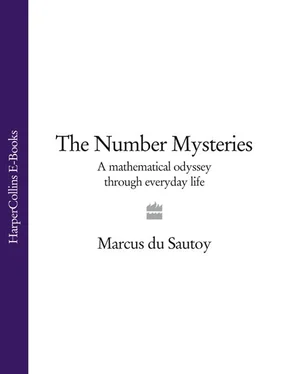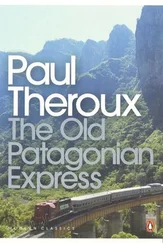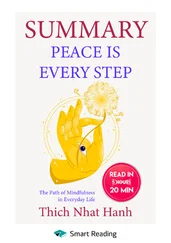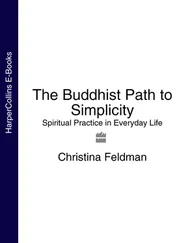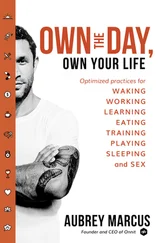But how were we to improve our league standing? Maybe Real Madrid were on to something—was there was some psychological advantage to be had from playing in a prime number shirt? Perhaps too many of us were in non-primes, like 8, 10 or 15. The next season I persuaded the team to change our kit, and we all played in prime numbers: 2, 3, 5, 7, … all the way up to 43. It transformed us. We got promoted to Division 1, where we quickly learnt that primes last only for one season. We were relegated back down to Division 2, and are now on the look-out for a new mathematical theory to boost our chances.
Should Real Madrid’s keeper wear the number 1 shirt?
If the key players for Real Madrid wear primes, then what shirt should the keeper wear? Or, put mathematically, is 1 a prime? Well, yes and no. (This is just the sort of maths question everyone loves—both answers are right.) Two hundred years ago, tables of prime numbers included 1 as the first prime. After all, it isn’t divisible, since the only whole number that divides it is itself. But today we say that 1 is not a prime because the most important thing about primes is that they are the building blocks of numbers. If I multiply a number by a prime, I get a new number. Although 1 is not divisible, if I multiply a number by 1 I get the number I started with, and on that basis we exclude 1 from the list of primes, and start at 2.
Clearly Real Madrid weren’t the first to discover the potency of the primes. But which culture got there first—the Ancient Greeks? The Chinese? The Egyptians? It turned out that mathematicians were beaten to the discovery of the primes by a strange little insect.
Why does an American species of cicada like the prime 17?
In the forests of North America there is a species of cicada with a very strange life cycle. For 17 years these cicadas hide underground doing very little except sucking on the roots of the trees. Then in May of the 17th year they emerge at the surface en masse to invade the forest: up to a million of them appearing for each acre.
The cicadas sing away to one another, trying to attract mates. Together they make so much noise that local residents often move out for the duration of this 17-yearly invasion. Bob Dylan was inspired to write his song ‘Day of the Locusts’ when he heard the cacophony of cicadas that emerged in the forests round Princeton when he was collecting an honorary degree from the university in 1970.
After they’ve attracted a mate and become fertilized, the females each lay about 600 eggs above ground. Then, after six weeks of partying, the cicadas all die and the forest goes quiet again for another 17 years. The next generation of eggs hatch in midsummer, and nymphs drop to the forest floor before burrowing through the soil until they find a root to feed from, while they wait another 17 years for the next great cicada party.
It’s an absolutely extraordinary feat of biological engineering that these cicadas can count the passage of 17 years. It’s very rare for any cicada to emerge a year early or a year too late. The annual cycle that most animals and plants work to is controlled by changing temperatures and the seasons. There is nothing that is obviously keeping track of the fact that the Earth has gone round the Sun 17 times and can then trigger the emergence of these cicadas.
For a mathematician, the most curious feature is the choice of number: 17, a prime number. Is it just a coincidence that these cicadas have chosen to spend a prime number of years hiding underground? It seems not. There are other species of cicada that stay underground for 13 years, and a few that prefer to stay there for 7 years. All prime numbers. Rather amazingly, if a 17-year cicada does appear too early, then it isn’t out by 1 year, but generally 4 years, apparently shifting to a 13-year cycle. There really does seem to be something about prime numbers that is helping these various species of cicada. But what is it?
While scientists aren’t too sure, there is a mathematical theory that has emerged to explain the cicadas’ addiction to primes. First, a few facts. A forest has at most one brood of cicada, so the explanation isn’t about sharing resources between different broods. In most years there is somewhere in the United States where a brood of prime number cicadas is emerging. 2009 and 2010 are cicadafree. In contrast, 2011 sees a massive brood of 13-year cicadas appearing in the south-eastern USA. (Incidentally, 2011 is a prime, but I don’t think the cicadas are that clever.)
The best theory to date for the cicadas’ prime number life cycle is the possible existence of a predator that also used to appear periodically in the forest, timing its arrival to coincide with the cicadas’ and then feasting on the newly emerged insects. This is where natural selection kicks in, because cicadas that regulate their lives on a prime number cycle are going to meet predators far less often than non-prime number cicadas will.
FIGURE 1.02 The interaction over 100 years between populations of cicadas with a 7-year life cycle and predators with a 6-year life cycle.
For example, suppose that the predators appear every 6 years. Cicadas that appear every 7 years will coincide with the predators only every 42 years. In contrast, cicadas that appear every 8 years will coincide with the predators every 24 years; cicadas appearing every 9 years will coincide even more frequently: every 18 years.
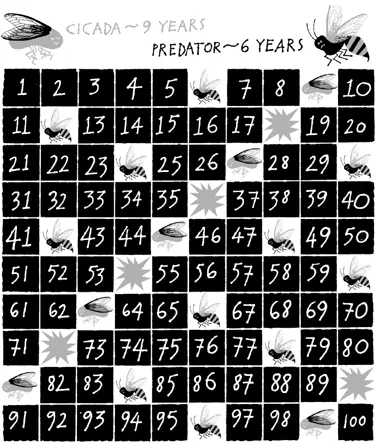
FIGURE 1.03 The interaction over 100 years between populations of cicadas with a 9-year life cycle and predators with a 6-year life cycle.
Across the forests of North America there seems to have been real competition to find the biggest prime. The cicadas have been so successful that the predators have either starved or moved out, leaving the cicadas with their strange prime number life cycle. But as we shall see, cicadas are not the only ones to have exploited the syncopated rhythm of the primes.
Cicadas v predators
Cut out the predators and the two cicada families. Place predators on the numbers in the six times table. Each player takes a family of cicadas. Take three standard six-sided dice. The roll of the dice will determine how often your family of cicadas appears. For example, if you roll an 8, then place cicadas on each number in the 8 times table. But if there is a predator already on a number, you can’t place a cicada—for example, you can’t place a cicada on 24 because it’s already occupied by a predator. The winner is the person with the most cicadas on the board. You can vary the game by changing the period of the predator, from 6 to some other number.

How are the primes 17 and 29 the key to the end of time?
During the Second World War, the French composer Olivier Messiaen was incarcerated as a prisoner of war in Stalag VIII-A, where he discovered a clarinettist, a cellist and a violinist among his fellow inmates. He decided to compose a quartet for these three musicians and himself on piano. The result was one of the great works of twentieth-century music: Quatuor pour la fin du temps —‘The Quartet for the End of Time’. It was first performed to inmates and prison officers inside Stalag VIII-A, with Messiaen playing a rickety upright piano they found in the camp.
In the first movement, called ‘Liturgie de Crystal’, Messiaen wanted to create a sense of never-ending time, and the primes 17 and 29 turned out to be the key. While the violin and clarinet exchange themes representing birdsong, the cello and piano provide the rhythmic structure. In the piano part there is a 17-note rhythmic sequence repeated over and over, and the chord sequence that is played on top of this rhythm consists of 29 chords. So as the 17-note rhythm starts for the second time, the chord sequence is just coming up to about two-thirds of the way through. The effect of the choice of prime numbers 17 and 29 is that the rhythmic and chordal sequences wouldn’t repeat themselves until 17×29 notes through the piece.
Читать дальше
